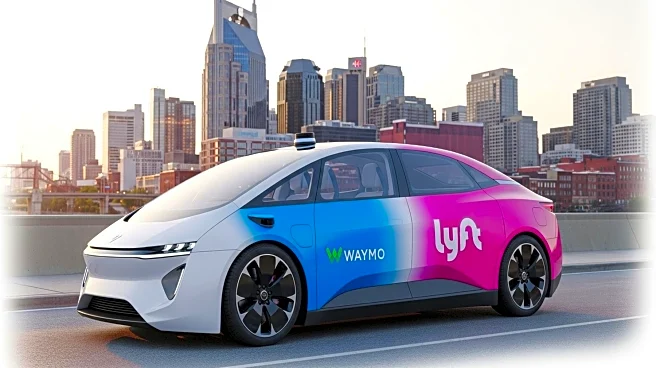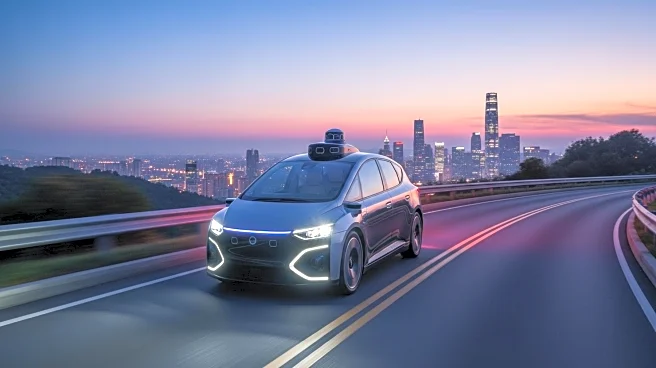What's Happening?
Singapore has introduced its first self-driving shuttles in Punggol, marking a significant step in autonomous public transport. The initiative, announced by Acting Transport Minister Jeffrey Siow, aims to deploy 10 self-driving vehicles by the end of 2025 and expand to 100-150 by the end of 2026. The shuttles, featuring five- and eight-seater vehicles, will operate on three routes, enhancing connectivity in areas less accessible by traditional public transport. The service will initially be free for community members to experience the technology before commercial operations commence. Safety measures include having a safety operator onboard at all times. The Land Transport Authority (LTA) plans to collaborate with Grab and ComfortDelGro to refine the service based on user feedback.
Why It's Important?
The launch of self-driving shuttles in Punggol represents a pivotal advancement in Singapore's public transport system, potentially setting a precedent for other cities globally. This initiative could lead to more efficient and convenient transportation options, reducing travel time and enhancing accessibility. The deployment of autonomous vehicles may also stimulate job creation in new areas such as remote operations and fleet management. Furthermore, the collaboration with major transport companies like Grab and ComfortDelGro highlights the potential for integrating autonomous technology into existing transport networks, offering a glimpse into the future of urban mobility.
What's Next?
As the self-driving shuttle service progresses, the LTA will monitor its implementation in Punggol with plans to extend similar services to other areas such as Tengah. Fare details will be announced closer to the service's start date, with pricing expected to be competitive yet not disruptive to existing transport modes. The authorities will continue engaging with local stakeholders to ensure smooth integration and address any safety concerns. The success of this initiative could pave the way for broader adoption of autonomous vehicles in Singapore and potentially influence transport policies in other regions.
Beyond the Headlines
The introduction of autonomous shuttles raises important considerations regarding urban planning and public acceptance of new technologies. While promising increased efficiency, it also necessitates addressing public concerns about safety and job displacement. The initiative could lead to long-term shifts in how cities design transport systems, emphasizing the need for infrastructure that supports autonomous technology. Additionally, the collaboration between local and international companies may foster innovation and drive further advancements in autonomous vehicle technology.











